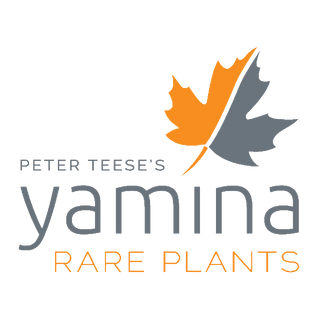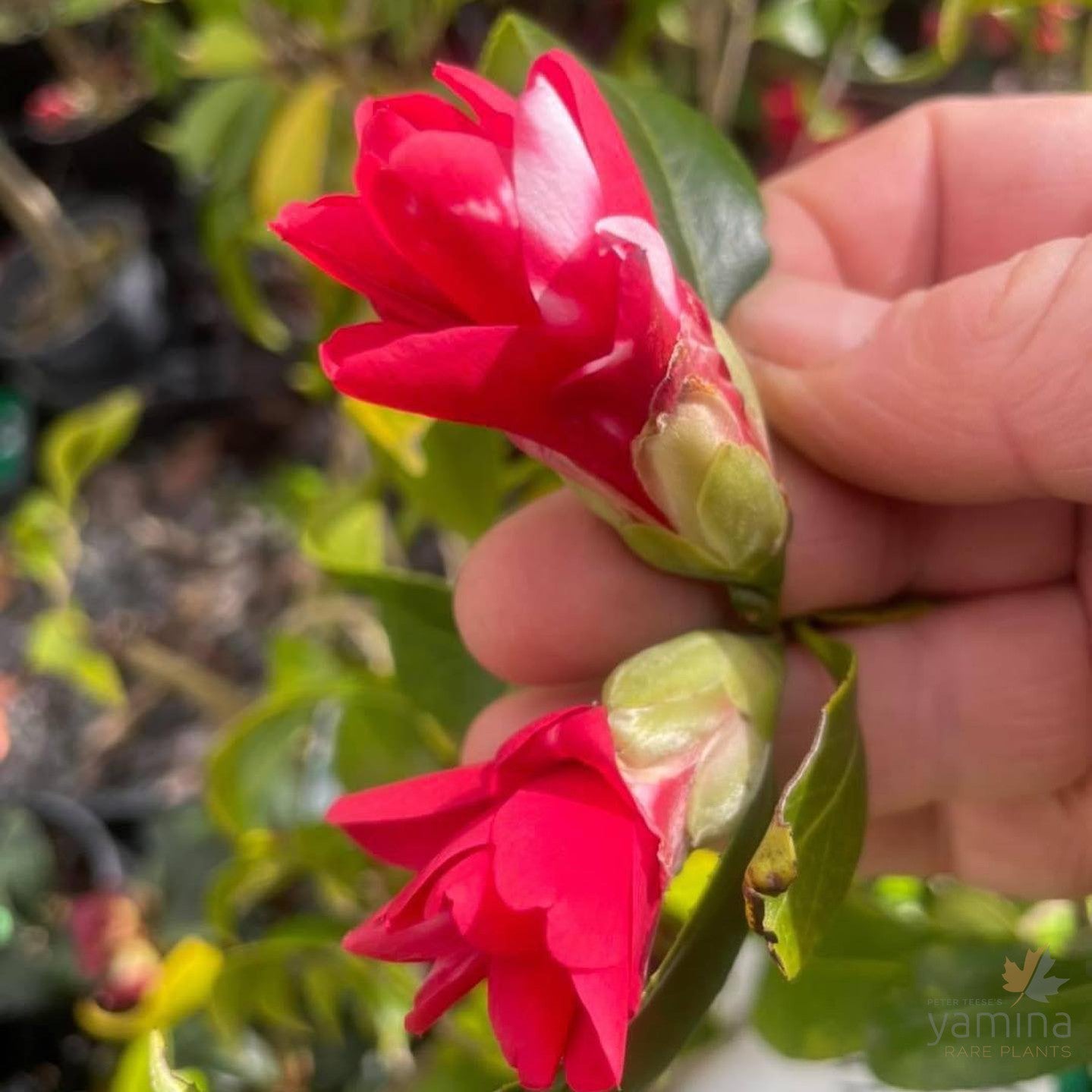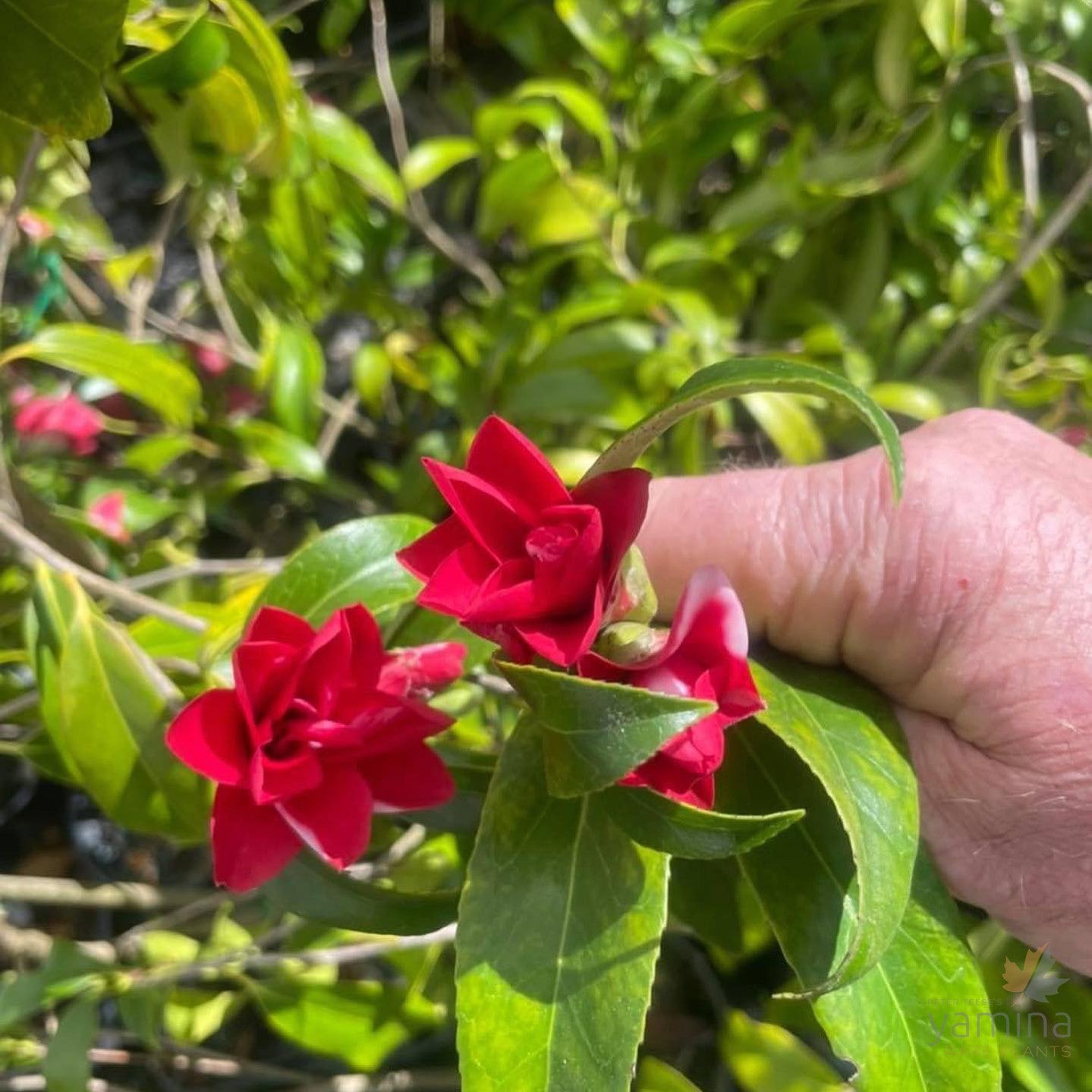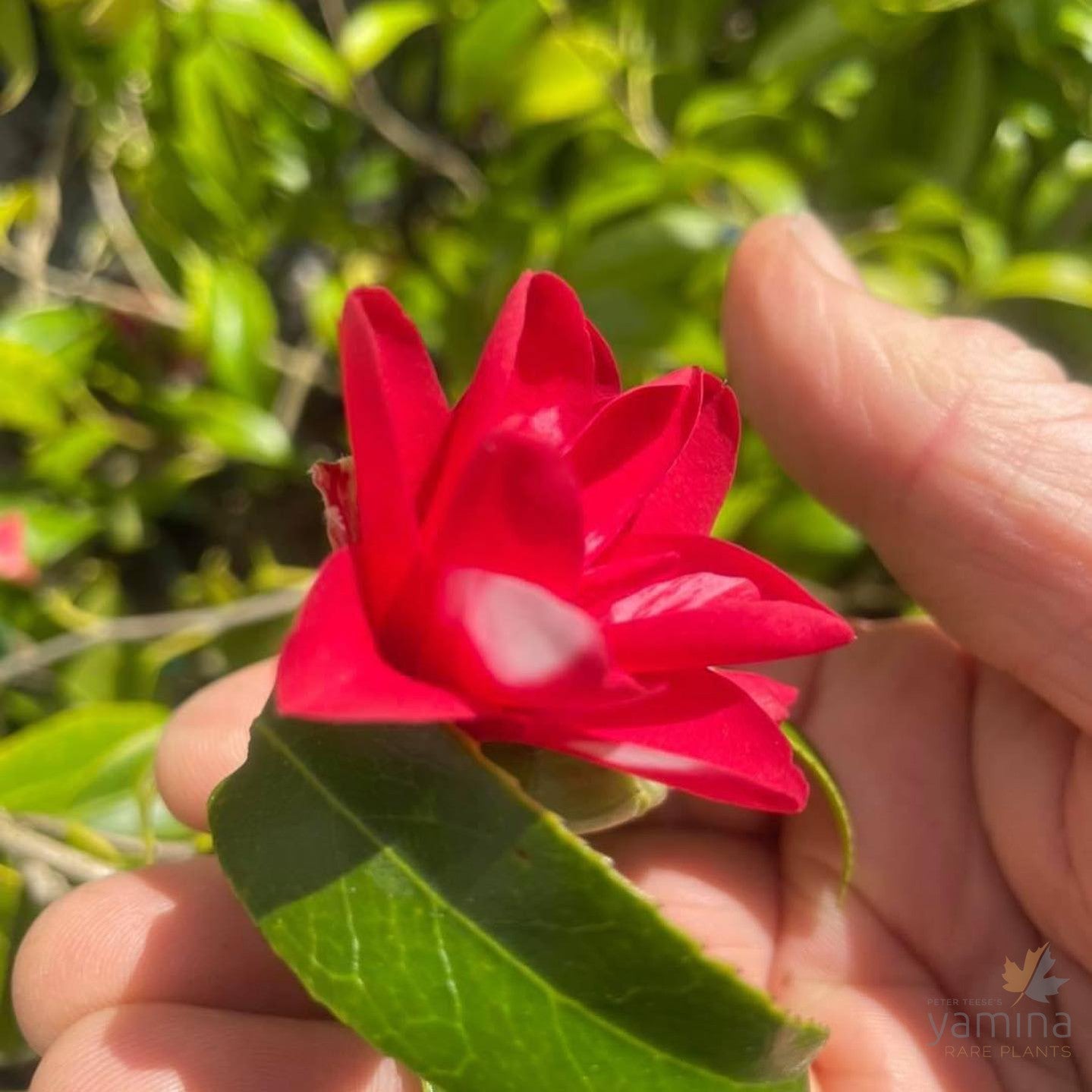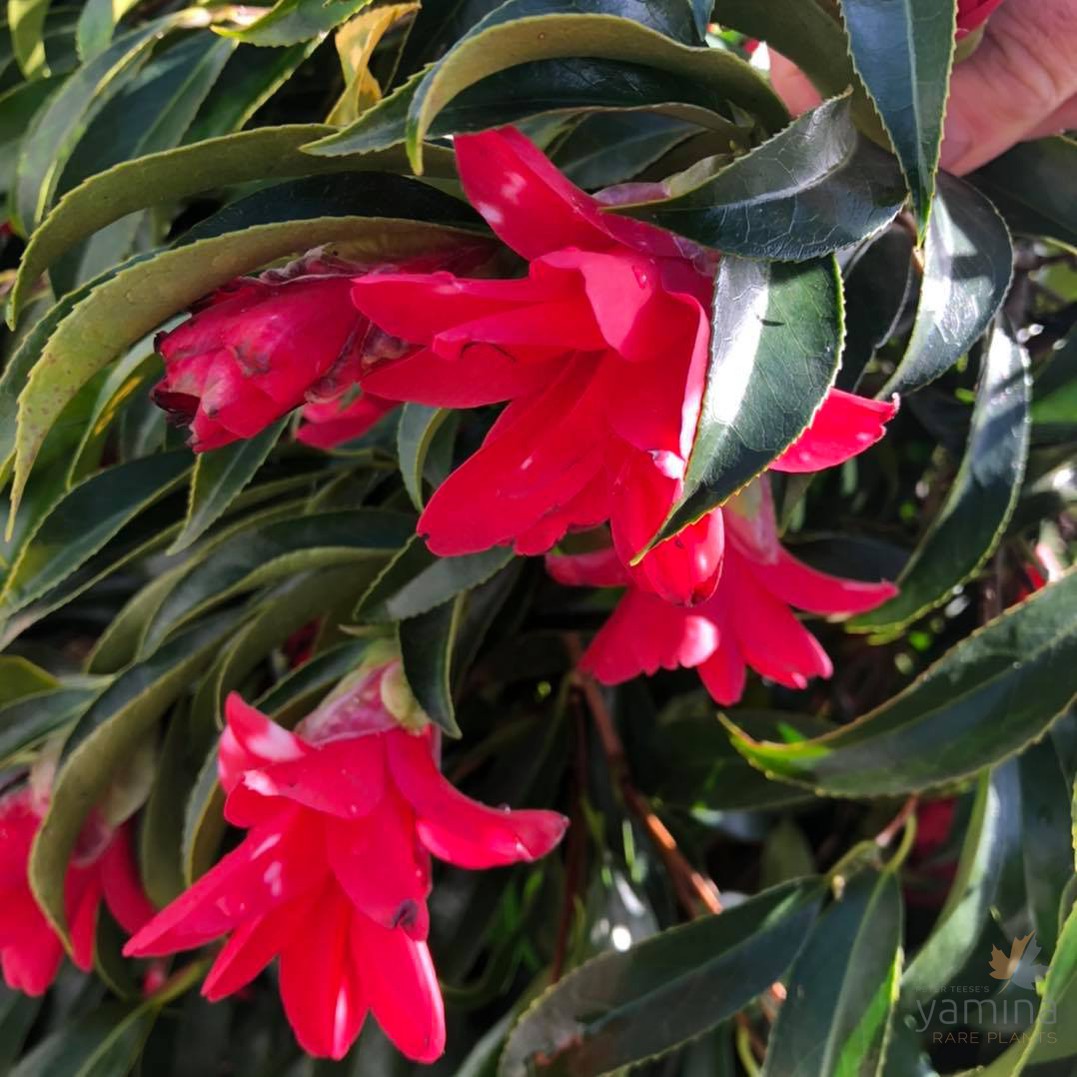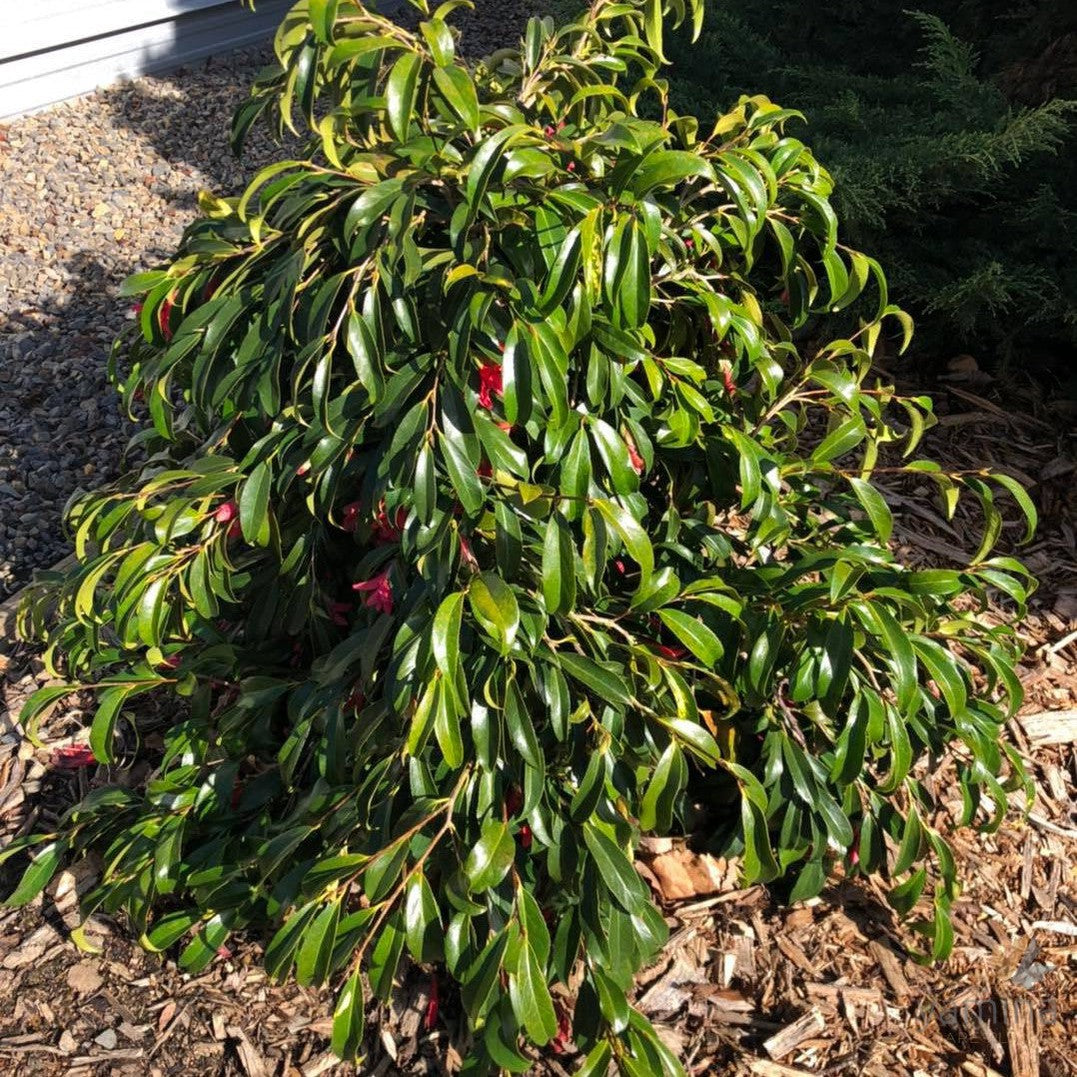Description
Botanical Name: Camellia japonica 'Hakuhan Kujaku'
Common Name: Hakuhan Kujaku Camellia
Family: Theaceae
Origin: Native to Japan, widely cultivated in Australia
Plant Type: Evergreen shrub or small tree
Size: Typically grows to a height of 1.8-3 meters (6-10 feet) with a similar spread. In optimal conditions, it can grow taller.
Foliage: The leaves are glossy, dark green, and leathery with a serrated edge. They are oval-shaped and provide a lush, evergreen presence throughout the year.
Flowers:
Bloom Time: Late winter to early spring (July to September in Australia).
Flower Color: The 'Hakuhan Kujaku' variety is known for its striking white flowers, often with a hint of blush pink at the edges.
Flower Form: The blooms are semi-double to double, featuring a ruffled, peony-like appearance. They are large, typically 7-12 cm (3-5 inches) in diameter, with numerous petals creating a full, layered look.
Light Requirements: Prefers partial shade to full shade. It thrives under the canopy of taller trees where it receives filtered sunlight. In hotter regions of Australia, providing afternoon shade is beneficial.
Soil Requirements: Requires well-drained, acidic soil rich in organic matter. Ideal pH is between 5.5 and 6.5. Avoid heavy, clayey soils or alkaline conditions. Mulching with organic material helps retain moisture and maintain soil acidity.
Watering: Requires regular watering, particularly during dry periods. Ensure the soil is consistently moist but not waterlogged. Deep watering is recommended to encourage deep root growth.
Climate: Suitable for temperate and subtropical regions of Australia. It does best in areas with mild winters and cool, moist summers. Protect from strong winds and frosts.
Maintenance:
Pruning: Minimal pruning required. Remove dead or damaged wood and spent flowers to encourage new growth. Light shaping can be done after flowering.
Fertilizing: Feed with a balanced, acid-forming fertilizer in spring and again in summer. Avoid using lime or alkaline fertilizers.
Pests/Diseases: Watch for common camellia pests such as scale insects and aphids. Fungal diseases can be an issue in humid conditions; ensure good air circulation around the plant.
Landscape Uses: Ideal for shaded garden beds, woodland gardens, or as a specimen plant. Can be grown in containers for patios and verandas. Its elegant flowers and evergreen foliage make it a versatile addition to Australian gardens.
